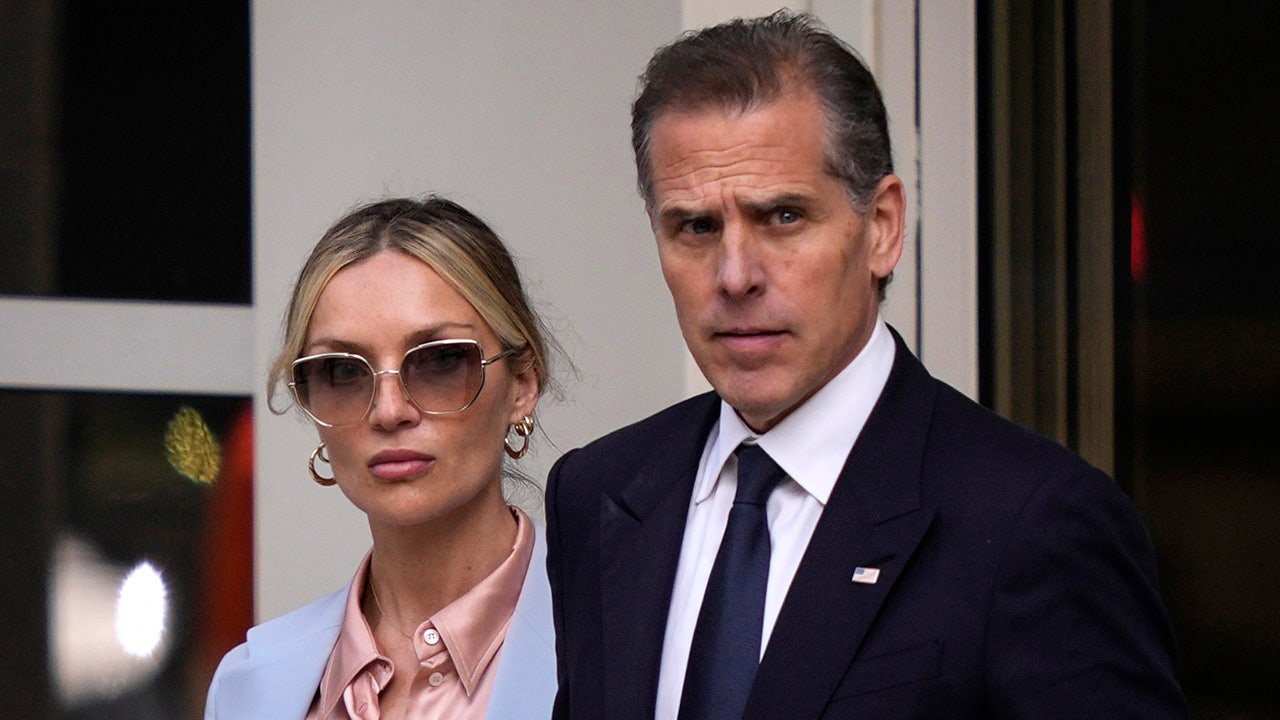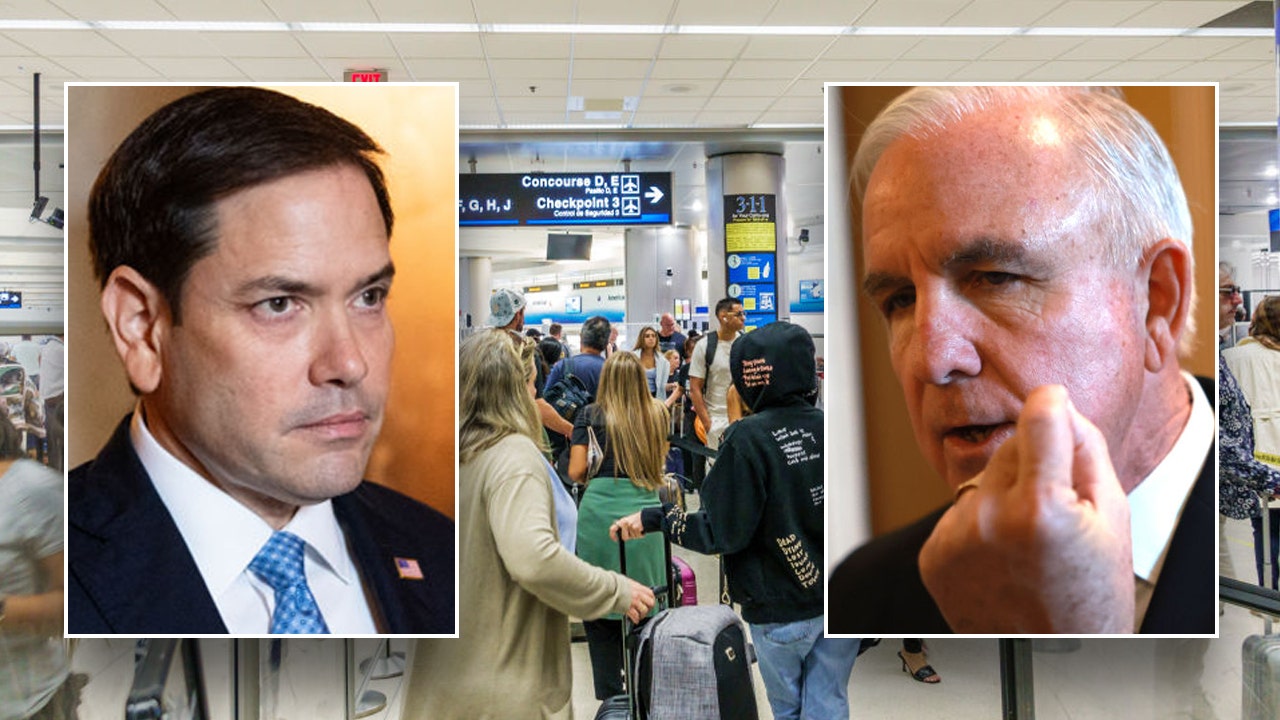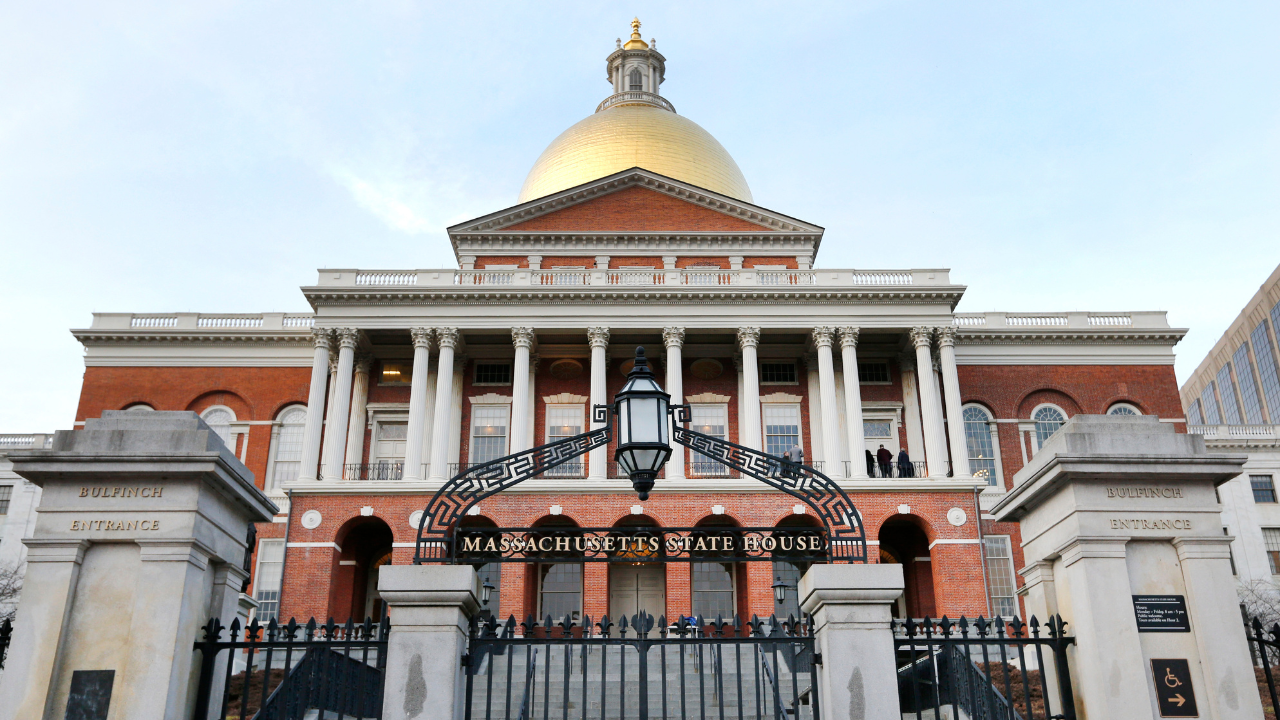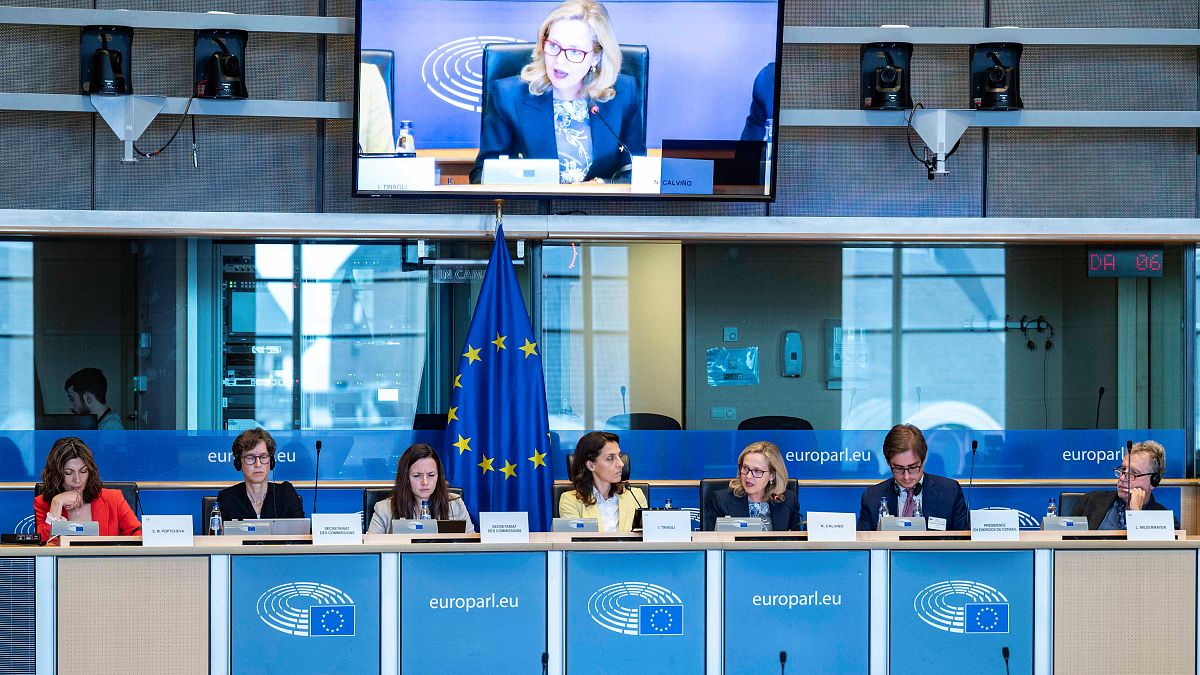Vermont
Health Watch: Pilot program provides aides for hearing and visually impaired Vermonters

RUTLAND, Vt. (WCAX) – A first-of-its-kind program for people with hearing and visual impairments has come to Vermont. It means dozens of Vermonters with dual hearing and visual impairments are now navigating life with the help of support service providers.
Monday’s for Josh Tabor and Morris Hier often means a 45-minute drive from Rutland to Fencing class in Cornwall. Anyone passing by might see two buddies out for a cruise — and they wouldn’t be wrong — but it’s also a lot more than that.
Tabor has visual and hearing impairments and Hier is his support services provider, or SSP, and helps with tasks Tabor he can’t do on his own. Tabor, who’s worked with Hier for two months, says the partnership is life-changing. “It gives me freedom to be able to do things that I would never be able to do. Such as fencing, such as going up to my friend Dave’s, such as going to Fort Ticonderoga, and eventually hopefully be able to find work — that’s my primary goal,” he said.
The pair connected through a pilot program launched in November by the U.S. Department of Health and Human Services, Administration for Community Living with the help of VANCRO Integrated Interpreting Service. Using a $120,000 grant, VANCRO paired 31 Vermonters with dual hearing and visual impairments with SSPs. It’s the first program of its kind in the state.
Providers went through a two-day training to learn how to provide everything from transportation to information about surroundings so program participants can make informed decisions.
Hier says the program is a gateway to a more enriching life for both program participants and providers. “I can feel good about it at the end of the day. I feel like I accomplish something and I help somebody out. That makes me feel pretty good to be needed at 70, you know? In our society it’s not always like that,” he said.
But the program has an expiration date. VANCRO’s Cory Brunner says unless permanent funding is secured, the program will end in September. “This gives them choice. It gives them autonomy, it gives them independence. And to have that for a year and then it just goes away, I just can’t honestly imagine how devastating it will be for some of the participants that we support,” Bruner said.
There’s hope that stories like Tabor’s could inspire a permanent program. Fred Jones with the Vermont Division for the Blind and Visually Impaired says the program could show the state the immense benefits of SSPs and secure permanent funding. “It’s hard to fund a program when you’re not sure who’s going to use it. And that’s basically what we’ve been able to do — is to show that this can have a huge impact on someone’s life,” he said.
Brunner says the demand is there for a permanent program. Three people are already waitlisted for providers and Vermont’s aging population needs more services for vision and hearing loss.
For Tabor, reverting to life without a provider is unimaginable. “I hope and pray that we can get this in a permanent thing. So that way, we can continue to live the way that we live in a rural state,” he said.
The Legislature this session is expected to consider a measure that would extend the program.
Copyright 2024 WCAX. All rights reserved.

Vermont
Gatorade lauds South Burlington boys soccer star
South Burlington’s Hammad Ali has been named the Vermont high school boys soccer player of the year, Gatorade announced Friday morning.
Ali is the seventh player in program history to receive the award, which recognizes outstanding athletic excellence, high academic achievement and exemplary character.
The 5-foot-10, 150-pound senior scored 11 goals and totaled 15 assists to lead the Wolves (14-3) back to the Division I title game after winning it all in 2022. Ali was also the Burlington Free Press player of the year and a 2023 United Soccer Coaches High School All-American honoree.
Ali earned first place for Biomedical Sciences at the Vermont STEM Fair as a junior. A leader of his school’s Community Service Club, he has volunteered locally as a Red Cross Donor Ambassador and as a youth soccer coach, according to a news release.
“Hammad was the class of the league and the state,” Mount Mansfield coach Dustin Hess said in a statement. “Both times we played South Burlington he eventually took over the game. When everyone was at their best, he was better. Hammad provided the spark to elevate his team.”
Ali has maintained an unweighted 4.02 GPA in the classroom. He will attend the University of Vermont this fall.
As part of Gatorade’s commitment to breaking down barriers in sport, every player of the year also receives a grant to donate to a social impact partner.
To learn more about the Gatorade Player of the Year program, visit playeroftheyear.gatorade.com.
Become a member of the Vermont Varsity Insider Facebook group at https://bit.ly/2MGSfvX.
Contact Abrami at aabrami@freepressmedia.com. Follow him on Twitter: @aabrami5.
Vermont
Police identify man killed and trooper who pulled trigger in officer-involved shooting

ORANGE, Vt. (WCAX) – Police have released the name of the man killed and the identity of the trooper who pulled the trigger in Wednesday’s officer-involved shooting in Orange.
Vermont State Police identified the man who was shot and killed as Jason Lowry, 41, and the trooper who fired the gun as Adam Roaldi, a five-year veteran of the state police.
Police also provided new information about the welfare check the trooper was responding to before the shooting happened.
Police say Roaldi went to 87 Spencer Street at the request of a local family services agency in a matter related to a minor. They say after dealing with that, the trooper noticed Lowry who appeared to be unconscious in a car in the driveway. They say the trooper thought Lowry might be overdosing and called for an ambulance.
After waking him up and ordering him out of the car, police say there was a struggle over a sawed-off shotgun. That’s when police say the trooper fired his service weapon several times, hitting Lowry in the neck and torso, killing him.
Police say the incident was caught on body camera video.
Once the state police investigation is complete, it will be turned over to the attorney general’s office and the county prosecutor for independent investigations into the use of force.
Trooper Roaldi has been placed on paid relief from duty.
Police say they later learned Lowry had an active arrest warrant for fentanyl trafficking and they found drug items in the car.
Copyright 2024 WCAX. All rights reserved.
Vermont
Sen. Peter Welch discusses the one-year anniversary of the flooding

A new report from the U.S. Congress Joint Economic Committee finds that flooding could cost the U.S. between $180 and $496 billion dollars annually in losses. Sen. Peter Welch cites that economic burden as one of the main reasons why he’s fighting for additional flood recovering and resiliency funding.
Welch joined Vermont Edition host Mikaela Lefrak to discuss the one year anniversary of the summer 2023 flooding, former President Donald Trump’s recent convictions, nonprofit theater funding and more
This segment of the conversation on flood resiliency has been edited and condensed for clarity.
Let’s start our conversation around flood resiliency, as the one year anniversary of the summer 2023 flooding is right around the corner. You are a member of the U.S. Congress Joint Economic Committee. Just this week, it shared a new report that shows that flooding could cause as much as $496 billion in losses each year in the United States. That is a massive number. Where did those losses come from?
We had our huge flood [in Vermont] just a year ago. Today, Florida is underwater in many, many places. What’s really, really tough is that this is going to keep flooding. And what we’re seeing in Vermont, of course, is the awareness that we have to build back in a more resilient fashion. So this is absolutely a product of climate change, and it just is a reminder of the urgency of addressing that issue.
In this report, it noted some of the the sources of those losses — the need for infrastructure upgrades for resiliency, commercial impacts, decreased tax revenue and more. I’m sure you’ve witnessed many of these here in Vermont in the past year. Can you tell us a little bit more about what you’ve seen on the ground?
The flood was a year ago and [we] immediately found, in the flood, it was all hands on deck, and neighbors helped neighbors dig out the mud and muck. Towns reacted and people did their best to get back on their feet. But now, a year later, I just recently went to Barre, I went to Johnson, I went to Hardwick. If it was your farm, if it was your business, if it was your home, you’re still suffering. And FEMA is tremendous in the immediate aftermath. They come in en force and really provide immediate emergency assistance. But a year down the road, there’s infrastructure problems — like in Johnson with their pump station, [or] like in Hardwick, where public resources were demolished along the bike path.
And this is where it gets tough with FEMA. Because at this point, you need folks who have flexibility, and you need FEMA officials who can make quick decisions, and also the money that is necessary. The best money is the one that goes through the disaster relief program through the CBDG program. But the bottom line is, it’s flexible. And you’ve got to have local leadership. So that’s what I’m working on with my colleagues, particularly [Sen.] Brian Schatz from Hawaii. And of course, they suffered that terrible fire around the time we had our terrible flood.
So that is going to be something that I think we’ve got to get to Vermont — the flexible funds in these towns that are going to help the farmers, that are going to help the town officials deal with infrastructure, and hopefully homeowners who are either going to get a buyout or hopefully get back in their home.
Have you been satisfied with FEMA’s flood response in Vermont over the past year?
I have been. They came in and I thought did a tremendous job. They were very responsive in their administration. But here’s what I’ve noticed: FEMA does not have the capacity for the long-term rebuilding of a community. They have the capacity for an immediate, short-term response to the disaster. And that’s where I think we’ve got to step back and reform the processes.
And what I’ve seen is that the leadership that is going to address what’s going on in Barre or in Johnson or in Ludlow — that has to be local, and they’ve got to be given flexibility. Because those folks are totally invested in the well-being of their community. And this is where FEMA needs some adjustment, because the FEMA folks now who are attending to these issues, they come and they go. There’s a lot of turnover, and they don’t have the flexibility. And that’s why these disaster relief funds, where there is flexibility, and where there can be local leadership, I think is so essential for the long-term recovery of communities.
Last week, you introduced the Rural Recovery Act, a bill that would essentially create a new program at the U.S. Department of Agriculture to provide rural development offices with more immediate funding for emergency recovery. This was co-sponsored by Sen. Bernie Sanders and Sen. Jeanne Shaheen of New Hampshire. What exactly would a bill like this change for Vermonters if another flood were to hit?
Essentially, it would create that flexibility I’ve just been talking about and empower the local leaders to provide their response. You know what I’ve seen with the floods that we had last year in July, and what we had going back to [Tropical Storm] Irene [in 2011], was that it was local select boards that got out the Rolodex and started calling up people in the community to come out with their backhoes or their front end loaders or do whatever it was, and get whatever equipment was needed to respond. Well, that flexibility, you need to have down the road. The immediate response is absolutely urgent and essential. But there are things that require long term effort, because it’s rebuilding. And this legislation would essentially create the flexibility and the resources for those rural communities that don’t have that administrative infrastructure to deal with the massive impact of a big flood. Sen. Shaheen is a great ally on this, and Bernie [Sanders] and I will be working on this along with [Rep.] Becca [Balint].
Broadcast live on Thursday, June 13, 2024, at noon; rebroadcast at 7 p.m.
Have questions, comments, or tips? Send us a message or check us out on Instagram.
-

 Movie Reviews1 week ago
Movie Reviews1 week agoFilm Review: I Used To Be Funny offsets its humorously-adjacent title with a dark, heartbreaking temperament. – The AU Review
-

 World1 week ago
World1 week agoEconomy, migration: Voters' main concerns ahead of elections
-

 News1 week ago
News1 week agoWoman handcuffed in police car hit by freight train reaches $8.5M settlement
-

 Politics1 week ago
Politics1 week agoTrump campaign accelerates vetting of potential running mates
-

 Politics1 week ago
Politics1 week agoHunter Biden trial enters 3rd day with cross-examination of FBI agent
-

 Politics1 week ago
Politics1 week ago'It's absurd': Congress takes bipartisan action after Cuban officials' tour secure parts of major airport
-

 Politics1 week ago
Politics1 week agoNew York appeals court judges in Trump case routinely donated to Democrats, records show
-

 World1 week ago
World1 week agoFamine ‘likely’ already stalking northern Gaza: Report

















